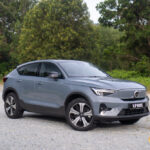Following the successful launch of the Kia Carnival, Kia Malaysia has unveiled its latest electric vehicle, the Kia EV6. Like its counterpart, the Hyundai Ioniq 5, the EV6 is built on the E-GMP platform, which is also shared with Genesis. In Malaysia, the GT-Line variant is the only option available. In this review video, we will take a closer look at the Kia EV6 and compare it with the Hyundai Ioniq 5.

 On the exterior, the EV6 managed to skillfully conceal its size, similar to the Ioniq 5. However, upon parking it beside a typical car, the substantial dimensions become more apparent. The front of the vehicle is styled with a sharp and low profile to maintain its sporty aesthetic, while also improving aerodynamics by reducing surface area and drag in comparison to the Ioniq 5. Additionally, the EV6’s large LED headlights are seamlessly integrated into the design and come equipped with adaptive high beam capabilities.
On the exterior, the EV6 managed to skillfully conceal its size, similar to the Ioniq 5. However, upon parking it beside a typical car, the substantial dimensions become more apparent. The front of the vehicle is styled with a sharp and low profile to maintain its sporty aesthetic, while also improving aerodynamics by reducing surface area and drag in comparison to the Ioniq 5. Additionally, the EV6’s large LED headlights are seamlessly integrated into the design and come equipped with adaptive high beam capabilities. 


And also to help reduce drag, the wing mirrors of the EV6 have been aerodynamically designed, and it also helps reduce wind noise by guiding the air around them. Similarly, the exterior door handles have been made to retract when the car is locked, similar to the Ioniq 5. At the back, the car features a futuristic-looking light bar that connects the two taillights. The indicator lights blend seamlessly into the body panel, adding to the car’s sleek appearance. 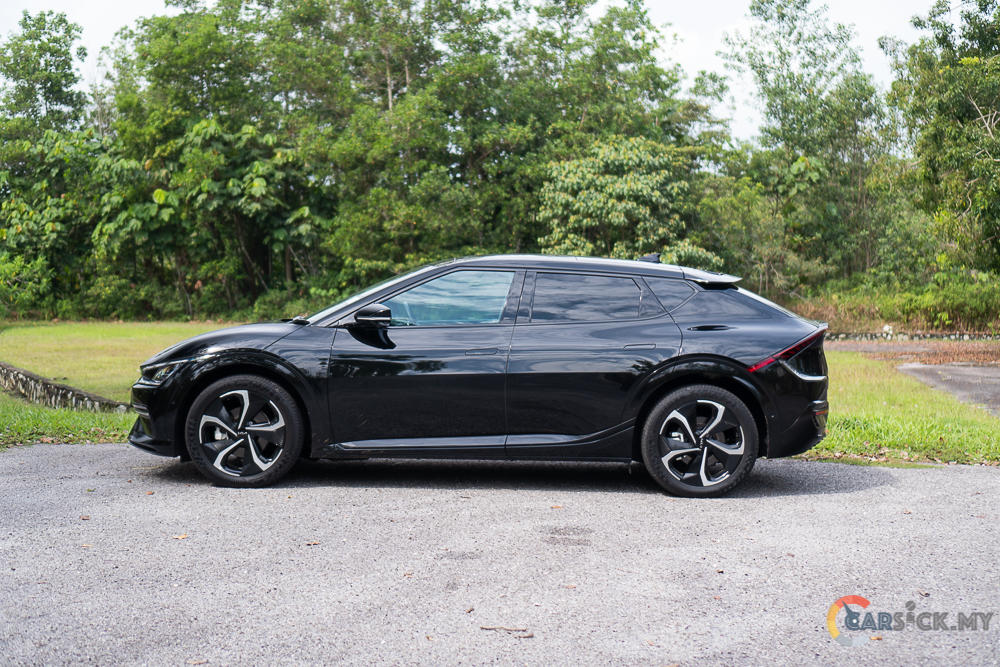





In addition, the back of the EV6 comes with a sizable spoiler adorned with small LED lights, making it an unmatched feature in the market and a stylish addition. The car’s appearance is further enhanced by a set of 20-inch wheels that perfectly complement its design. These wheels are wrapped in 255/45 R20 tires that provide optimal grip for the vehicle. Overall, I believe that the Kia design team has achieved a pleasing blend of sportiness and sophistication. 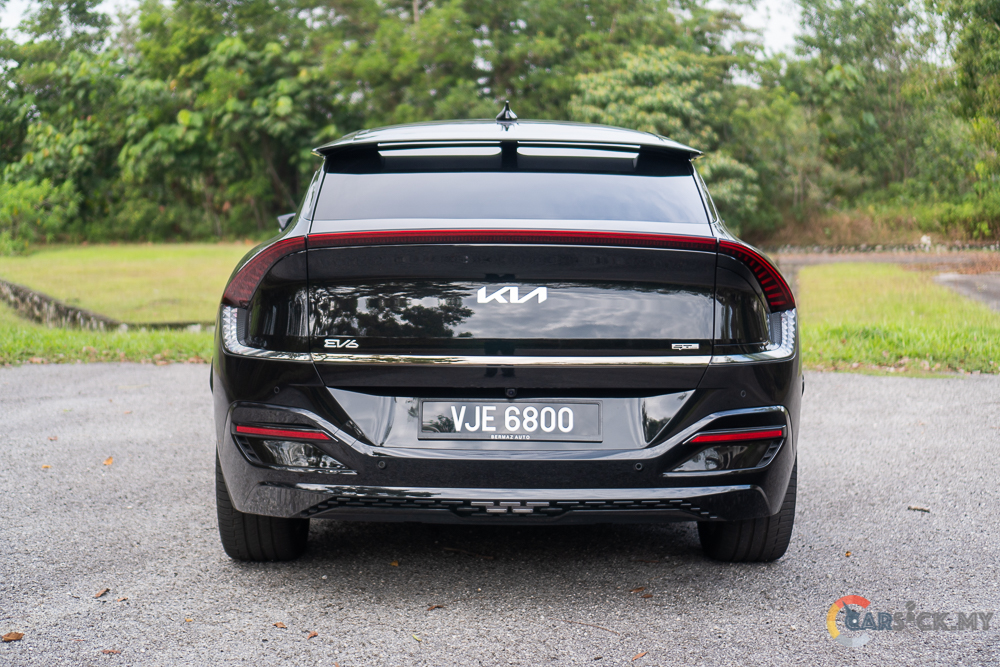





On the inside, the interior of the EV6 exudes a sporty and luxurious feel with its abundant use of premium materials and darker hues. Its dashboard stands out from other Kia models, featuring a distinctive pattern on the passenger side that adds vibrancy to the overall look. This same pattern is also found on the center armrest, further enhancing the car’s interior aesthetics. 


Apart from that, the EV6 boasts Tron-inspired ambient lights that surpass the Ioniq 5’s in aesthetics. The gear lever boasts a futuristic appearance, yet operates similarly to that of the Carnival. Throughout the dashboard, Kia employs numerous touch-sensitive buttons for climate control and the infotainment screen. However, the touch-sensitive buttons situated atop the gear lever proved problematic for the writer, as they found themselves inadvertently activating heated and ventilated seats and steering. 
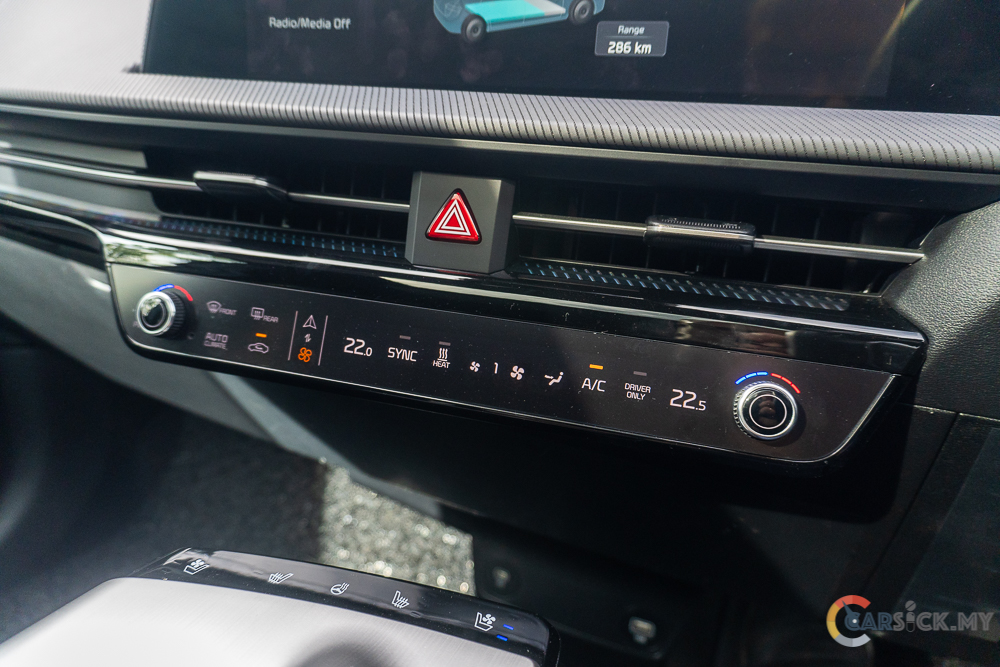

Both the instrument cluster and infotainment screen have a size of 12.3 inches, similar to that of the Ioniq 5. However, the instrument cluster has sportier graphics to match the interior. The infotainment screen is a standard Kia system like the one found in the Carnival, but it is connected to the Meridian premium audio system, providing a pleasurable in-car entertainment experience. Nonetheless, in comparison to the Ioniq 5, I found the Bose sound system more fitting to my preference. 




Around the cabin, the EV6 is loaded with USB charging slots to keep occupants’ devices charged up. Additionally, the vehicle boasts a 3 pin plug under the rear seats, similar to the Ioniq 5. For those with wireless charging-capable phones, the EV6 offers a convenient wireless charging pad located next to the gear shifter. To keep charging cables organized, there are two clips on either side of the center console. 




As I sit in the driver’s seat of both the EV6 and the Ioniq 5, I can sense that the EV6 places a greater emphasis on the driver experience. The driver’s seat is positioned lower to the ground and boasts a taller center armrest, which contributes to a more immersive driving experience. Additionally, the EV6’s two-spoke steering wheel, reminiscent of the TA version of the Picanto albeit with a slightly larger diameter, provides excellent comfort and grip. The thickness of the steering wheel provides a reassuringly solid feel, making for an enjoyable driving experience. 

Regarding the seats, the front seats in the EV6 can also go into zero gravity mode, similar to the Ioniq 5, which allows the front passenger to relax while the car is charging. However, unlike the Ioniq 5, the front seats in the EV6 do not have a leg rest, likely due to their proximity to the ground. The back seats of the EV6 offer ample legroom and headroom and have AC vents on the B-pillar, similar to the Ioniq 5. However, the design of the AC vents in the EV6 is not as elaborate as in its counterpart. The rear seats of both cars can be folded down, but the EV6 does not have the sliding feature for its rear seats. 


Behind the rear seats, the EV6’s provided a sizable 520L measurement. However, visually, it may not appear as large as the number implies. By folding down the rear seats, the boot space can be further expanded. Further storage is available in the 15L space under the hood, which is ideal for smaller items such as charging cables. Although the EV6 features a sunroof, the Ioniq 5’s solar roof may be a more impressive topic of conversation. 



Powering the EV6 is two electric motors situated on both the front and rear axles, fueled by a 77.4 kWh battery that provides an estimated driving range of up to 506 km. The EV6 powertrain boasts impressive performance statistics, including a total output of 320 Hp, a total torque of 605 Nm, and an acceleration time from 0 to 100 km/h in just 5.2 seconds. With a top speed of 185 km/h, the EV6 is an impressive electric vehicle that is sure to impress 


Under the skin, the EV6 features an 800V architecture, enabling high speed charging for its battery. However, I was unable to test this feature on a faster charger due to time constraints during my review. One design feature I appreciate is the electronic charging flap, seamlessly integrated into the vehicle’s overall aesthetic. Similar to the Ioniq 5, the EV6 also boasts vehicle-to-load (V2L) capability, enabling the car battery to power household appliances if necessary. 

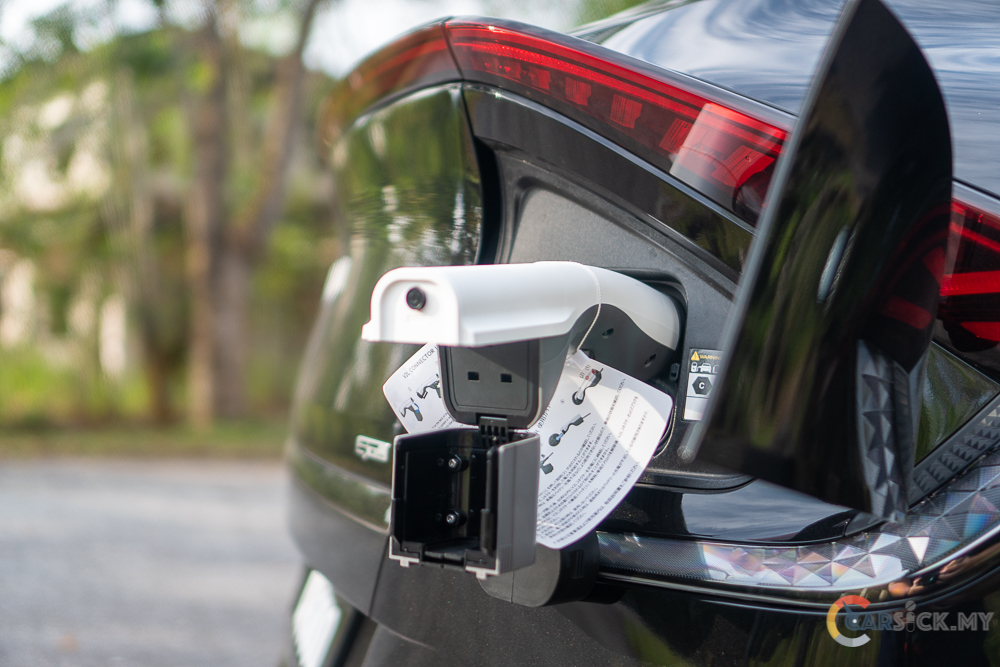
In terms of the performance and power delivery, the EV6 and Ioniq 5 both equally provide instantaneous and swift acceleration thanks to its instant torque. However, the EV6 boasts a more aerodynamic design, which enables it to slice through the air more efficiently and achieve a superior battery range compared to the Ioniq 5. Nonetheless, due to the brief duration of the test, it was difficult to fully test the limits of the EV6’s battery range.
With a lower roofline, it allowed the EV6 to navigate corners with more confidence even at higher speeds. Its stiffer suspension, in comparison to the Ioniq 5, also contributes to this confidence, while still providing adequate absorption of road imperfections. However, on rougher roads with sharper bumps and edges, some vibrations may be felt inside the cabin due to the suspension. The steering wheel has a weighty and direct feel, allowing the driver to have a clear sense of the car’s movements when turning. While the EV6 is eager to turn into corners, caution is required when making sudden directional changes, as the car’s weight becomes more noticeable. 


The EV6’s brakes perform well, and its regenerative brakes can halt the vehicle if one-pedal driving is enabled. Throughout my drive, I never doubted the brakes’ ability to manage the weight of the EV6. Moreover, the vehicle boasts a unique feature: remote parking, a rarity in the current market. While it’s impressive, I question its practicality beyond showing it off to others. The EV6 is a contemporary electric vehicle that boasts an array of advanced safety and driver assistance systems to aid drivers on the road. The comprehensive ADAS is so complete that, with the appropriate software, it could enable the EV6 to operate autonomously.
Some of the safety systems in the EV6 include six airbags, Anti-lock Braking System (ABS), Electronic Brake-Force Distribution (EBD), Electronic Stability Control (ESC), Brake Assist (BA), Traction Control System (TCS), Hill-Start Assist Control (HAC), Rear Occupant Alert (ROA), and Safe Exit Assist (SEA). Additionally, the driver assistance systems include Blind-spot Collision-Avoidance Assist (BCA), Rear Cross Traffic Collision-Avoidance Assist (RCCA), Blind Spot View Monitor (BVM), Lane Keeping Assist (LKA), Smart Cruise Control with Stop & Go (SCC w S/G), Forward Collision-Avoidance Assist (FCA), High Beam Assist (HBA), and Driver Attention Warning (DAW). 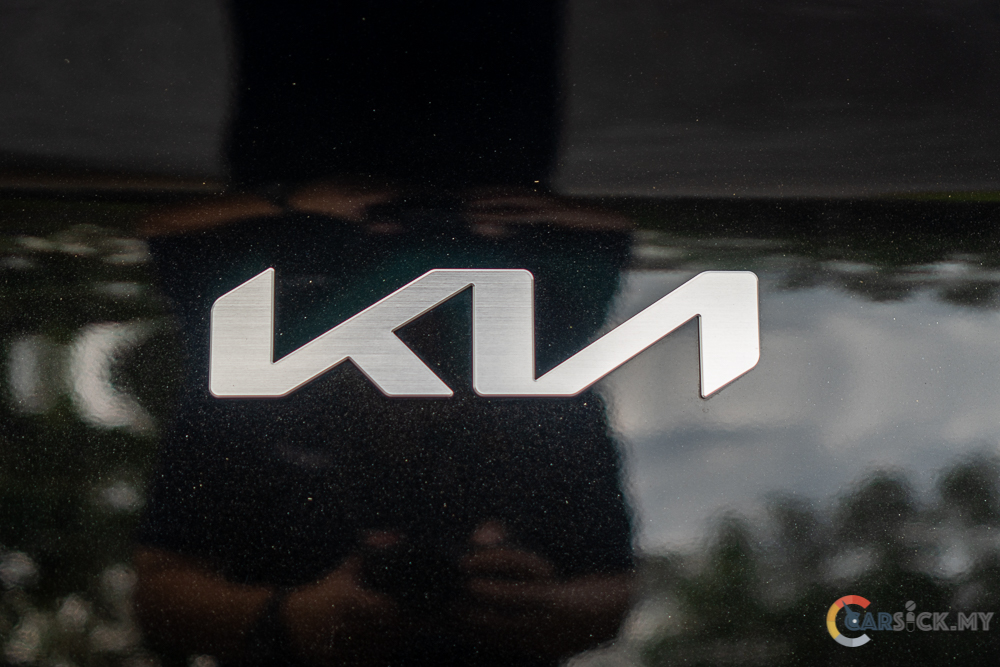

Even though the EV6 and Ioniq 5 share the same platform, they cater to different market segments and offer distinct driving experiences. The EV6 leans towards a sporty feel, whereas the Ioniq 5 targets those who prefer SUVs. Priced at RM 300,668.00, the EV6 is the more expensive option, but its interior materials and colors give it a more upscale vibe compared to the Ioniq 5. However, if standing out is a priority, the Ioniq 5 may still have an advantage in that aspect.
Check out full photo album here. 









